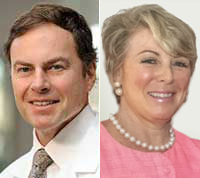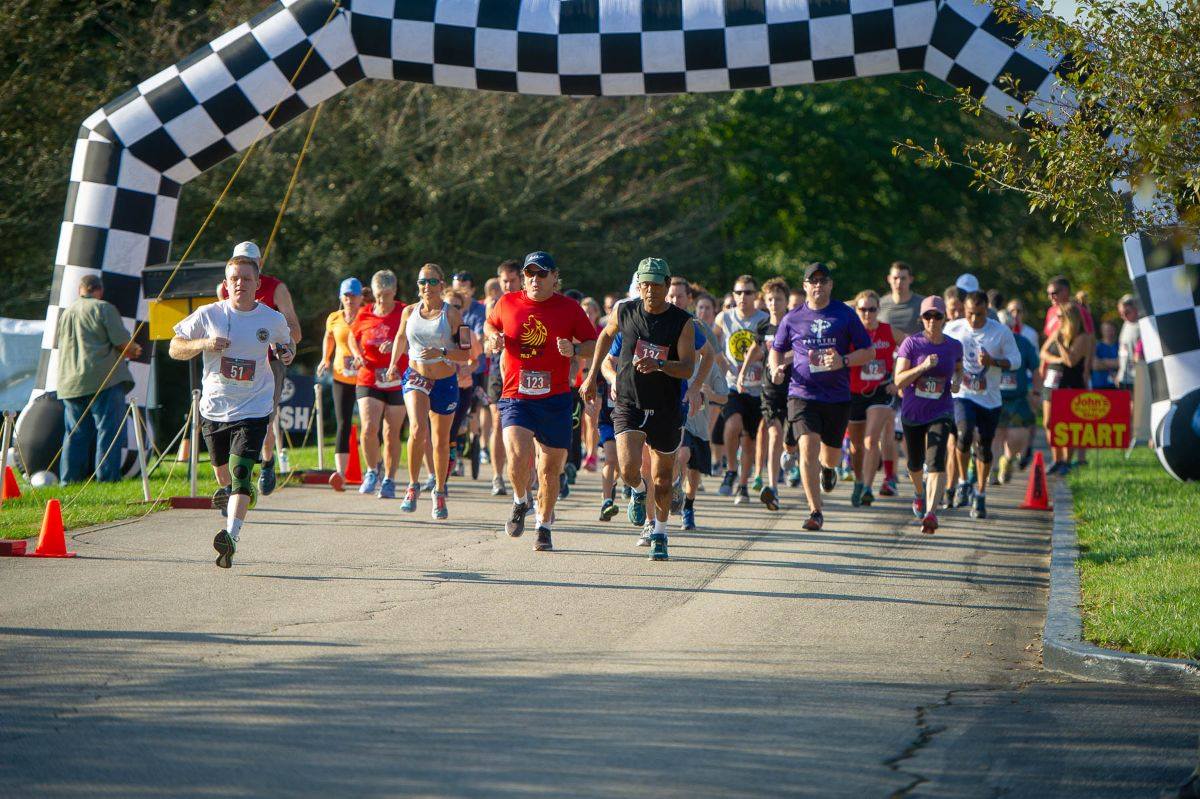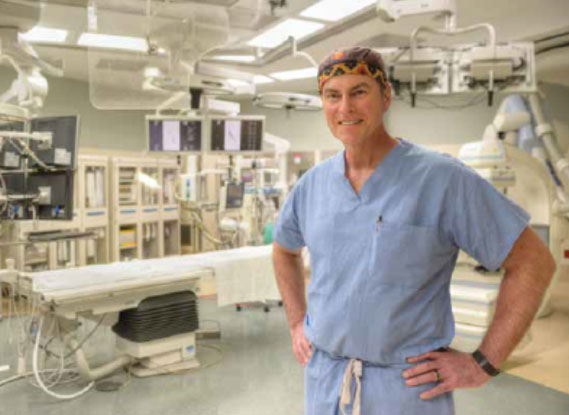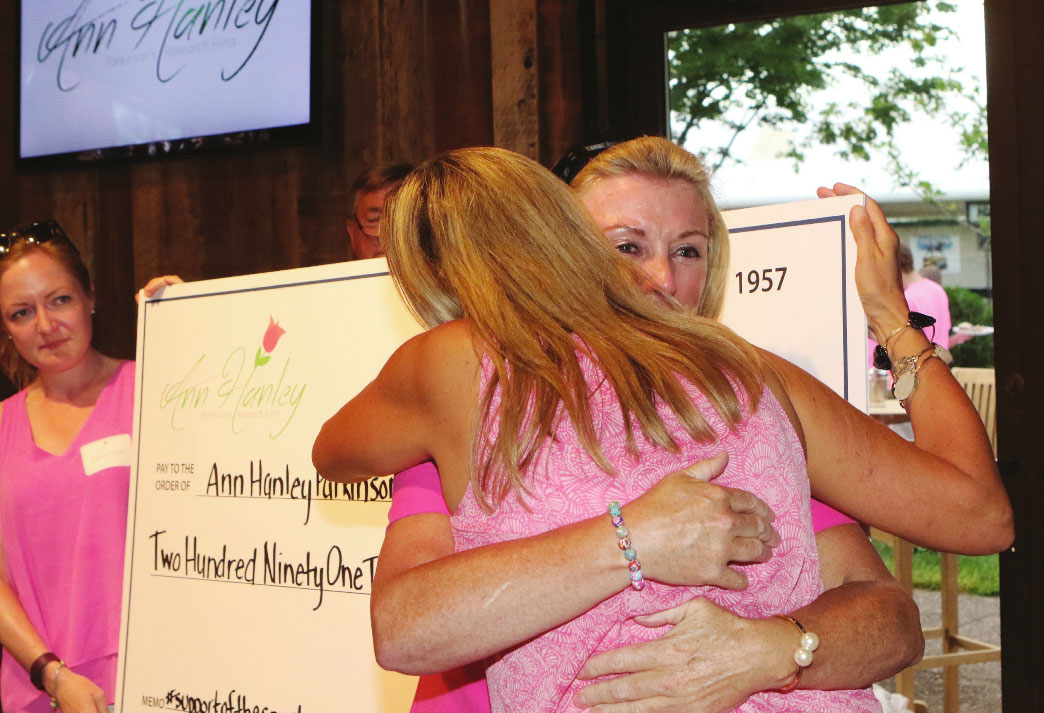By Meredith Daugherty
In five days time, Tom Ryan of SF Bloodstock and his wife Katie will make the nearly 800-mile journey northward from Lexington, Kentucky to Rhinebeck, New York to compete in the Oct. 13 Fall Foliage half marathon. While for many runners the race is the final stepping stone before the New York City marathon, the Ryans will be running with a different goal in mind—one with the power to impact their local and nationwide communities long after they’ve crossed the finish line.
As longtime friends of Ann Hanley, wife of WinStar Farm general manager David Hanley, a recent invitation to a dinner at the home of the president of the University of Kentucky gave the Ryan’s new perspective on how to get the most out of their half marathon experience. Hanley, who was diagnosed with Parkinsons at 49, founded the Ann Hanley’ Parkinson’s Research Fund in 2016 to help underwrite the cost of continued research into the disease at UK’s Brain Restoration Center.
“The dinner was very inspiring and they talked a lot about the amazing research they’re doing at UK for Parkinsons,” said Katie Ryan. “Ann herself is both a patient and employed there so we were inspired. We thought, why not turn this run into something better?”
“I think we came home from dinner that night feeling that we needed to do something, and we can, so why should we sit on our laurels and not try to help Ann?” said Tom Ryan.
As a tribute and immediate way of contributing to the cause, each of the 13.1 miles run by the Ryan’s on Saturday will be completed to help raise money for the Ann Hanley Parkinson’s Research Fund.
“There has been remarkable support from the local industry as well as the global industry,” said Tom Ryan. “I believe every sales company in the world has donated to this and so have most of the big farms here in Lexington. There have been lots of private donations as well so it’s lovely to see.”
According to the Mayo Clinic, Parkinson’s disease is defined as a degenerative and progressive nervous system disorder that damages and eventually destroys neurons in the brain causing tremors, rigid muscles, impaired posture and balance, slowed movements, changes in speech, and ultimately death.
While there is currently no cure for the disease, Hanley is the 60th recipient of an experimental surgery developed by Dr. Craig van Horne and Dr. Greg Gerhardt—fellow members of the BRC team—that involves the use of Schwann cells taken from the sural nerve in a Parkinsons patient’s leg to perform was is known as “deep brain stimulation therapy” or DPS. Injected into the brain, the nerve cells are meant to help improve brain function and slow the progression of the disease.
“As far as we understand with this project, there is no drug company backing the research because there is no drug involved. It’s a surgical procedure so it’s made funding especially difficult despite the promising results that they’ve shown,” said Katie Ryan.
“One thing to say about the Thoroughbred industry, for all of her flaws, is that when there is someone in need within the industry that is reaching out, the game is great,” said Tom Ryan. “Everyone comes together and they really lend their support.
“Our goal started out at $20,000 and four hours later I called Katie and said, ‘You need to change it to $30,000’. The next day I said we needed to change it to $50,000. We’ve raised over $75,000 and hopefully with a push in the next 10 days we might eclipse $100,000. It’s really been remarkable and the momentum it has gathered has been wonderful. That will make a big difference in someone’s life down the road. The sky is the limit.”
Training steadily in anticipation of Saturday’s race, the Ryans said they are motivated to up their game in the hope of achieving extra donations based on their finish times.
“I’d like to add that this is the hilliest half-marathon on the calendar,” joked Tom Ryan. “We’ve trained sufficiently to get around there, but there are some incentives. One, if we both complete the race; two, if we complete it within two hours; and three, if we knock it out in a hour and 52 minutes there are further donations to come. So it’s great to see people getting involved with it in a fun way. The harder we try, the bigger the results for the foundation.”
While Saturday’s finish line will mark the end for the Ryan’s initial fundraising efforts, the race for a cure to Parkinson’s disease—and for a better quality of life for all those affected—is one the couple encourages everyone to keep running.
“Our goal is to keep on fundraising,” said Tom Ryan. “There is no stop date on this and there shouldn’t be. This is something everyone should be mindful of. It’s a disease that doesn’t have a cure and one that could affect anyone of us. No one is immune.
“The outpouring of support for this has been extraordinary. To do this is an amazing feeling. We can get up and run a race and create awareness and we’re glad to be able to do it.”
Originally published on BloodHorse.com






